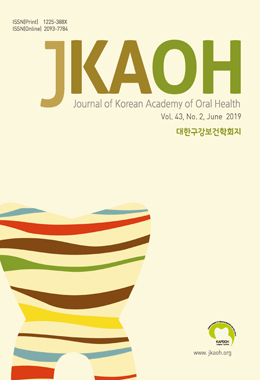Objectives: This study evaluated oral health-related quality of life (OHQoL) before and after orthodontic treatment (orthodontic-tx) using the modified Oral Impact on Daily Performance (OIDP) questionnaire.
Methods: Ninety-six subjects (32 males, 64 females; 48 ranging between 12-17 years, 48 ranging between 18-29 years) who completed orthodontic-tx in two dental clinics in Busan from May to December 2013 participated in this study. The participants self-reported their OHQoL on the Korean translated version of the OIDP before and during orthodontic-tx when the brackets were removed from their teeth. The OHQoL was again measured 1 month later. The visual analogue scale (VAS) from 0 (never) to 10 (definitely yes) was used to quantify the OHQoL. The physical, psychological, and social effects of the orthodontic-tx on daily performance were analyzed according to age and gender.
Results: The OHQoL score was lower during the orthodontic-tx (7.49±0.19) than before (5.51±0.18), but the final OHQoL score, after orthodontic-tx (9.39±0.07), was higher than the score before treatment. The trend was the same over all sub performances. Before orthodontic-tx, the OHQoL score related to psychological performance (6.98±0.22) was the lowest compared to physical and social performance. During orthodontic-tx, the scores related to physical performance, especially in the older (0.7 times) and female (0.62 times) groups, decreased the most compared to before treatment. Psychological performance, especially in the older (1.81 times) and female (1.66 times) groups, increased the most after orthodontic-tx.
Conclusions: This study confirmed that orthodontic-tx affects the OHQoL according to age and gender. Specific approaches, classified by age and gender, are needed to improve the quality of life of orthodontic dental patients.


